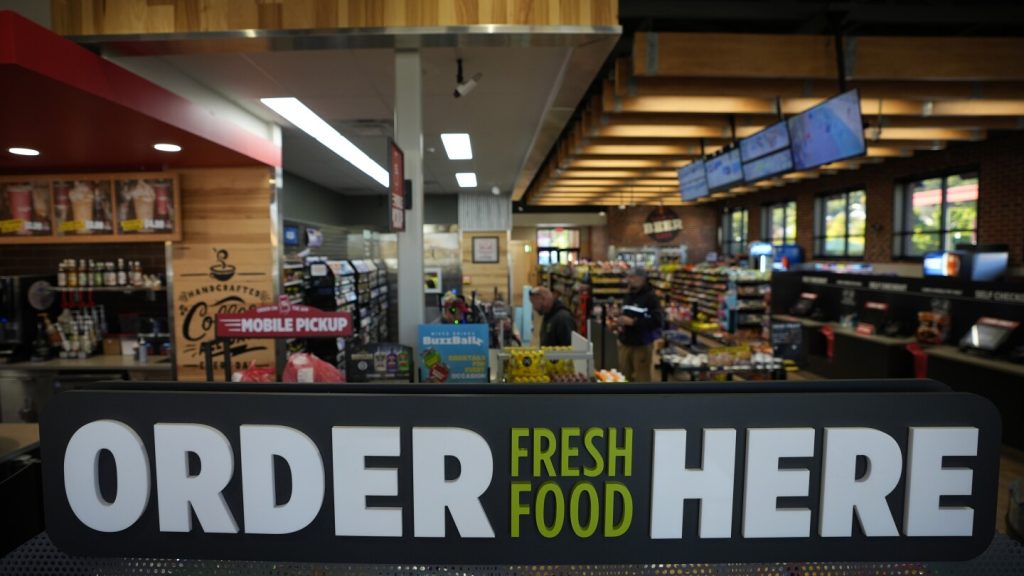Americans looking for food options at convenience stores and gas stations during road trips are in for a pleasant surprise. These establishments are offering more diverse and appealing choices, taking inspiration from overseas to rival fast-food restaurants. Chains like 7-Eleven and QuikTrip are adding seating, expanding coffee menus, and experimenting with made-to-order meals to attract customers craving easy, interesting, and affordable eating options. This shift comes as convenience stores, traditionally known for cigarettes and soft drinks, seek new ways to boost sales. According to Jeff Lenard of the National Association of Convenience Stores, the goal is to shift from being seen as a last resort for food to a destination for quality dining experiences.
Convenience store chains like Wawa and Rutter’s have expanded their offerings to include dinner options such as soups, chicken, and fish dishes. Casey’s General Stores introduced warm sandwiches and sliders made with premium ingredients, aiming to position themselves as a cost-effective alternative to traditional restaurants. With the impact of the pandemic, convenience stores are also expanding delivery services to cater to a wider customer base. For example, 7-Eleven plans to roll out its delivery app nationwide, offering popular items like pizza and Slurpees to customers at their doorstep. These efforts reflect a broader trend of convenience stores looking to differentiate themselves by offering unique and diverse food options.
The market for convenience store food is evolving rapidly, with chains like 7-Eleven introducing select Japanese items at their U.S. locations and experimenting with regional offerings to suit diverse tastes. This shift towards more creative and global-inspired menus is driven by a desire to attract customers seeking new and exciting dining experiences. However, with increased competition from fast-food chains and rising inflation, convenience stores are also focusing on affordability. In many cases, convenience store food is proving to be a more cost-effective option compared to traditional restaurants, offering value for money to consumers.
The convenience store food sector has experienced significant growth during the pandemic, with non-fuel sales increasing by 36% between 2018 and 2021. This growth has been driven by factors such as the temporary closure of restaurants and the convenience of accessing food at these establishments. With the decline in cigarette sales as a portion of overall revenue, convenience stores are doubling down on their food offerings to capture a larger share of the market. Consumers are increasingly turning to convenience stores for affordable and convenient meal options, with some establishments like Arko Corp. offering budget-friendly choices like $4.99 pizzas.
Nutritionists and health organizations are encouraging convenience stores to focus on offering healthier options like fresh fruit and yogurt parfaits. While traditional convenience store fare may not always be the healthiest, operators are making efforts to include more nutritious options to cater to health-conscious customers. Despite the focus on healthier choices, convenience stores are still retaining classic items like chips and sandwiches to appeal to a wide range of tastes. With convenience stores playing an increasingly important role in the food landscape, the industry is adapting to meet the evolving needs and preferences of consumers on the go.


